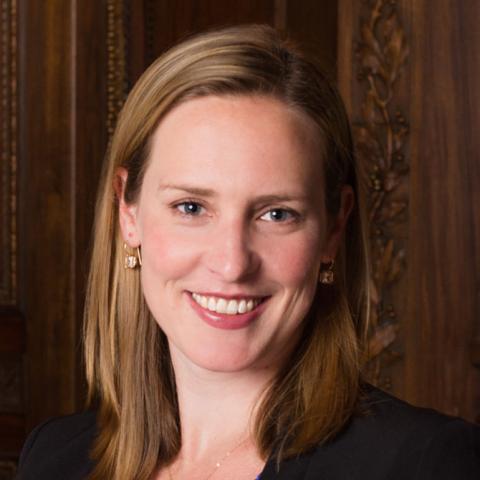Published August 2, 2022, in the Harvard Business Review. Reposted with permission.
America’s health care system seems, paradoxically, both endlessly innovative and profoundly dysfunctional. On the one hand, we hear almost daily about flashy new ventures like, most recently, Amazon’s recent purchase of One Medical, a large provider of primary care, that promise transformative improvements in health care efficiency, quality, and service.
On the other hand, the day-to-day performance of the U.S. health care system is an international embarrassment. The United States spends twice as much as any other high income country on health services while its maternal mortality, infant mortality, preventable mortality, overdose deaths, levels of chronic illness, levels of obesity, and deaths from Covid-19 put it at the bottom of the pack in the developed world. The American public is awash in personal medical debt, and even the best connected struggle to find a primary care physician.
Could Amazon’s $3.9 billion acquisition be the breakthrough that will change all this? After all, the deal seems to demonstrate Amazon’s full commitment to becoming a player in delivering health care services. And we know that Amazon has deep pockets, talent, breathtaking IT skills, and a proven ability to turn economic sectors upside down. It’s also shown a willingness to incur short-term losses to realize a profitable long-term vision.
We should never underestimate Amazon. But we also shouldn’t underestimate the challenges it faces in working its usual magic in America’s huge, troubled, tangled health care sector. Even Amazon has learned this the hard way in it failed Haven partnership with Berkshire Hathaway and JPMorgan Chase and, to date, the lack of market share or disruption by Amazon Pharmacy.
Regarding the One Medical deal, let’s start with the basics. Amazon’s first task is to make its new primary care venture successful. As one of us (David Blumenthal) argued in a previous article, primary care is difficult to sustain financially because of the low payment rates it commands from third-party payers. In fact, One Medical has been losing money because, though it charges a membership fee, it generates much of its revenue from the usual, inadequate, primary care reimbursements. This is despite the fact that its patients tend to be well insured by commercial insurers who pay comparatively generously.
To become financially viable, Amazon’s primary care subsidiary will likely have to dramatically change One Medical’s model by taking financial risk for the specialty and hospital services that account for much of the high costs and waste in the U.S. health care system. Taking financial risk enables primary care providers to reap the true value of the undercompensated services they provide, services that can prevent chronic illnesses from worsening and thereby avoid unnecessary emergency visits, specialty care, and hospitalizations. The resulting savings can be huge, benefiting patients, purchasers, primary care providers, and their financial backers
These changes are eminently possible. A number of viable models exist, including One Medical’s own subsidiary, Iora Health. But most of these models serve Medicare and Medicaid patients because these public payers have been willing to contract with primary care groups on a risk-sharing basis.
To remake the U.S. health care system broadly, and to assure One Medical’s financial success, Amazon will have to penetrate the commercial market with these new models. Employers collectively insure about half of Americans and generally pay much more generously than public payers. But these private purchasers have also been extremely reluctant to jump into innovative payment arrangements with providers, preferring the familiar fee-for-service model, which is how One Medical currently bills for most of its services.
Why do employers balk at innovative payment arrangements? Some just don’t understand them. After all these new models can be complex, and most employers don’t have specialized benefits managers to puzzle through the details. Therefore, they think it’s better to stick with the familiar fee-for-service approach and cut costs by increasing deductibles and copays.
But there is another powerful reason for employers’ reluctance to engage in risk-sharing arrangements. The primary care providers and other organizations that accept risk succeed by reducing costs, and in addition to avoiding unnecessary care, they usually require patients to use selected local providers with whom they’ve negotiated lower prices. This can limit patients’ choices. Sometimes the excluded hospitals and specialists are the brand names in local markets: downtown academic centers and their affiliated faculties. Employers simply don’t want to deal with the resulting employee complaints about the restrictions, especially in competitive labor markets.
For its part, Amazon has succeeded in the past by offering consumers seemingly limitless choice in its online markets. Constraining choice is unlikely to be viewed as “consumer centric.”
Even if it can attract sufficient employer interest in new care models, the Amazon health care enterprise will face still another problem that is plaguing the U.S. health care system: consolidation among providers. Health care is an intensely local market. Though telehealth can provide some services remotely, the most expensive — hospital care, emergency care, complex diagnostics and procedures, physical therapy, and more — have to be delivered in person within reasonable geographic proximity. This means that risk-bearing entities — primary care or otherwise — have to contract with providers in that market. Local monopolies increasingly enable those providers to charge pretty much anything they want. In the absence of competition, selective contracting to lower costs just doesn’t work.
There are other challenges facing Amazon’s new venture. One Medical is known for locating in comparatively affluent areas with young populations and charging a $200 annual membership fee — thereby limiting its exposure to uninsured, poor, and costly patients. To remake the U.S. health care system, new models have to be comfortable with all comers, including the sickest, most complex, and most expensive. Five percent of patients in America account for 50% of health care spending.
Amazon also faces competition from the likes of United’s Optum and the combined CVS Health and Aetna, which have the advantage of providing both insurance and health care services and which already employ physicians and other providers at scale. Their existing presence in local markets, data on hospital and specialist prices and utilization, and experience with managing risk put them well ahead of Amazon, which is just dipping its toe into health care delivery.
Amazon is undoubtedly aware of these issues and may already have plans to manage them. More likely, its strategy is simply to take it a step at a time and see how things evolve. A company of Amazon’s size simply can’t ignore the business opportunities in America’s chaotic $4.1 trillion health care economy.
But as still another deal blazes across the health care firmament, a fundamental question looms: Can profit-driven entrepreneurship and bottom-up innovation make the U.S. health care system work anywhere nearly as well as those in places like France, Sweden, Norway, Australia, the Netherlands, New Zealand, Germany, and Switzerland? They may be relatively dull, but they keep people healthy at an affordable cost.


